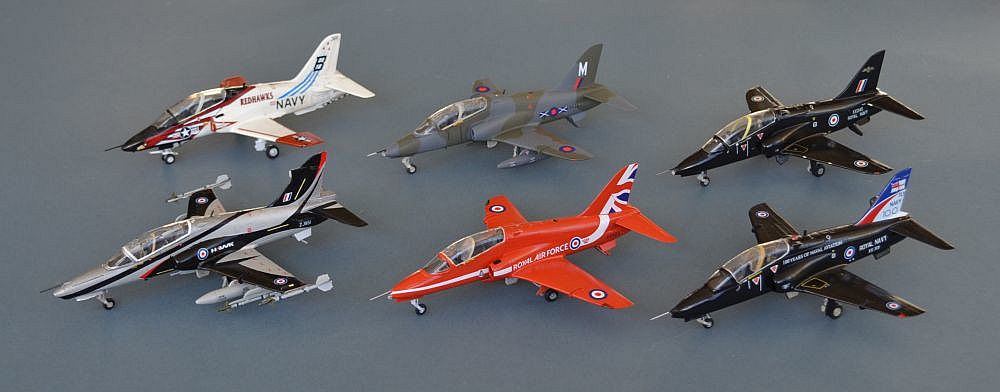March 2021 Boeing T-
BAE Hawk T.1A
Boeing T-
US Navy VT-
Carrier Landing Trainer.
Italeri 1/72 , with scratch modifications and Caracal Models decals.
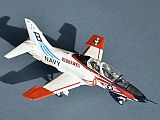
One of the most unusual variants of the Hawk is the T-
Introduced in the early 1990s, it is expected to remain in service until the 2030s. The aircraft is an extensively modified variant of the Bae Hawk 60 series, with strengthened airframe and undercarriage, a tail hook and a modified wing with full length leading edge slats and larger slotted flaps, intended to reduce landing speeds on the carriers. Light practice bombs can be carried on 2 wing pylons, but the aircraft are normally flown in the clean state, or with a single centreline baggage carrier.
To ease transition to more capable modern jet aircraft, the current Goshawk has an
updated glass cockpit that emulates the look and feel of operational fighters and
some aircraft have been fitted with synthetic radar to allow back seat training of
F-
Building an Italeri -
I seem to be having a bit of a Hawk binge at the moment.
This kit is an easy build, with good fit and delicate engraved detail. Unfortunately
it represents a prototype aircraft, so does not have all the airframe modifications
seen on the production versions. Most of these changes are easy to add though and
Caracal produce a superb set of T-
Addressing the required changes to a "good enough" standard is relatively easy, although some inaccuracies remain and a few compromises are needed, such as trimming the wings and tailplanes rather than extending them. FWIW, I think Italeri's nose profile is good enough (some suggest it is not deep or fat enough) and the extended fin seems to be tall enough as well. The main wheel positions are also correctly located further out on the kit.
However, one area that definitely needs addressing is the wing leading edge. The
kit shape is that of the standard Hawk, whereas the Goshawk has a straight leading
edge, with a single full width leading edge slat. Adding this slat from some plastic
card also addresses the straightness and the more abrupt inner wing joint. However,
having done so it almost becomes essential to drop the flaps. Mine were simply cut
and lowered, although I attempted to create the multi-
The current T-
The kit decals were old and cracked, so I acquired a set of Caracal T-
In summary then, a very easy conversion of a nice kit, plus some superb aftermarket decals, that gives me yet another smart looking Hawk derivative in my collection!
Background image: A Red Arrow. How could I possibly build Hawk kits without showing a Red Arrows Picture ?
© www.gengriz.co.uk
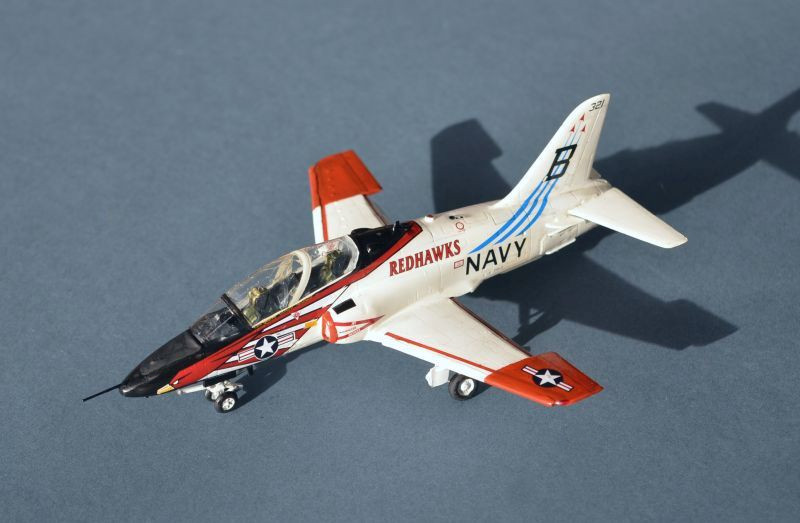
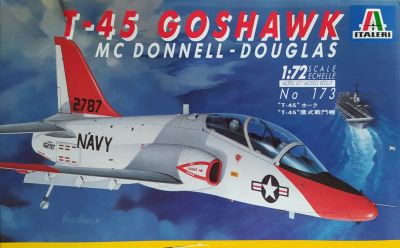
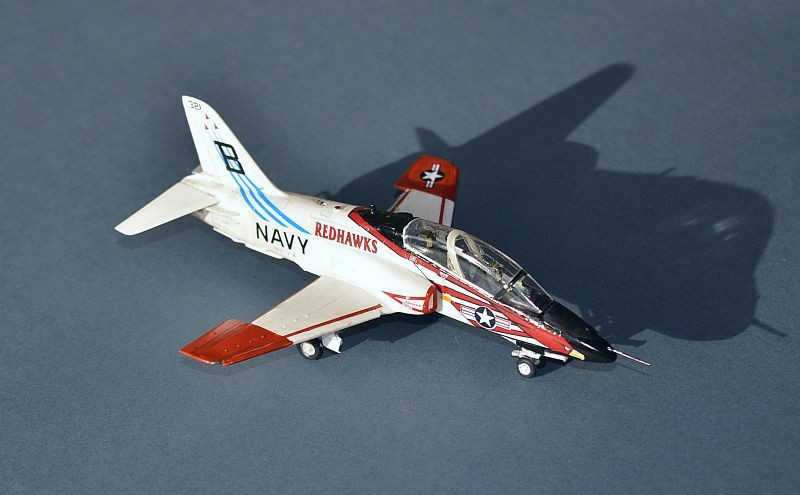
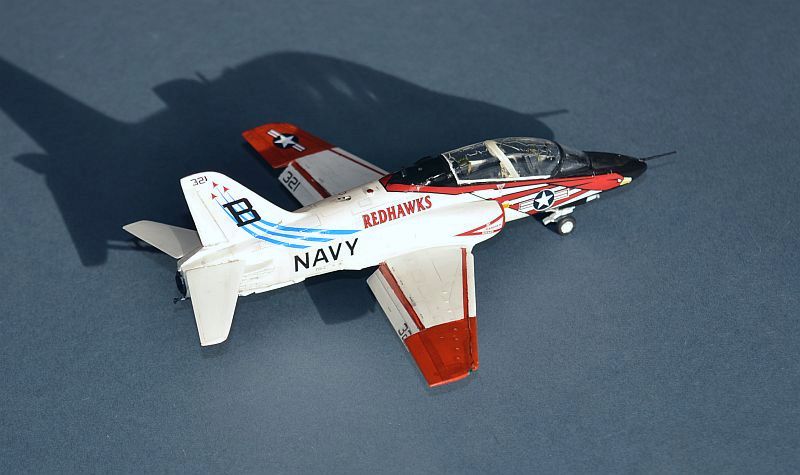
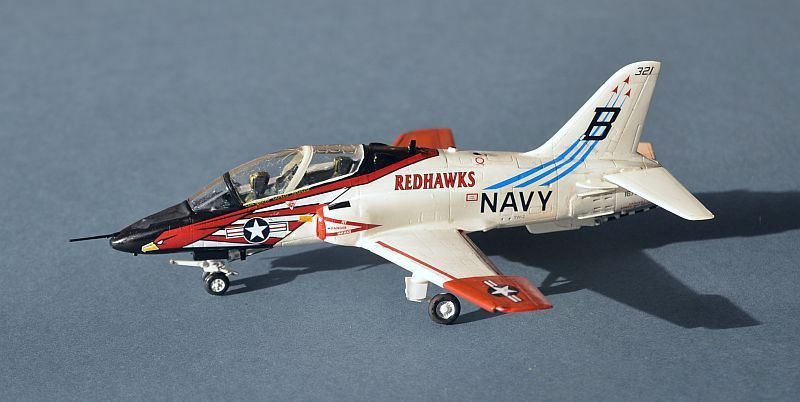
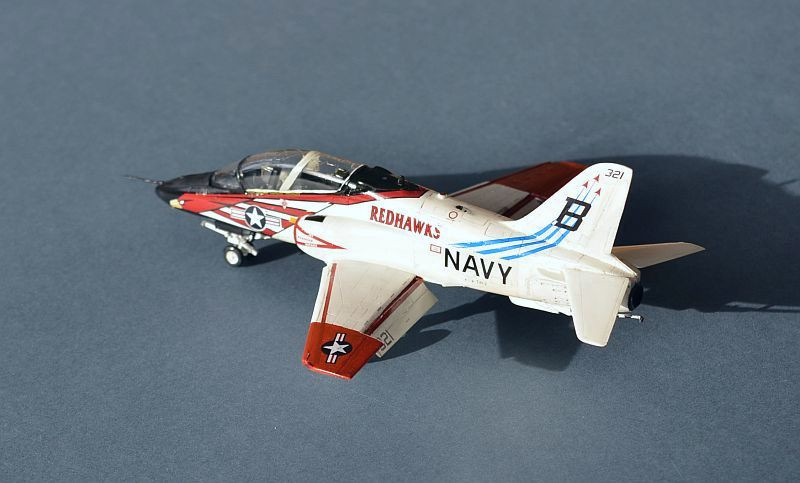
151 (Fighter) Sqn, 2 Tactical Weapons Unit, RAF Chivenor, Devon, 1983
Advanced Tactical Weapons Trainer.
Airfix 1/72
During the late 1980s and early 1990s, the RAF attempted to boost its air defence capabilities by modifying a number of Hawk trainers so that they could carry weapons, specifically 2 Sidewinders and a centreline Aden Gun pod. In this form, as the T.1A, training reserve Squadrons became part of the “mixed Fighter Force”, taking full advantage of the Hawk’s agility and combat capabilities. The plan was to use the radar and Data Link equipped Tornado F.3 as a lead element, escorting and directing Hawk T.1As which would engage in close range dogfighting. Hawks could also be allocated to point defence of vulnerable sites, including RAF airfields.
151 (F) Sqn at Chivenor became part of this force, with a primary role of advanced tactical weapons training, plus a wartime role of air defence.
Building the Airfix Hawk T.1A:
This is the same kit that I assembled in 2018 in its Red Arrows form. As I was marooned in bed with a broken leg at the time, it can’t have been that hard to build !
The kit assembles easily and precisely with no real foibles. My cockpit positioning
issues with the Mk.120 did not recur. As with all Hawk kits, the internal windscreen
poses a few issues -
Decals include the set I used, for a wrap around camouflaged aircraft, plus some very nice ones for a 208 Sqn (very tempting to me, as 208 are the former RNAS “Naval 8” Sqn). These latter ones are the same as that provided with the Revell kit, albeit without the anniversary lettering.
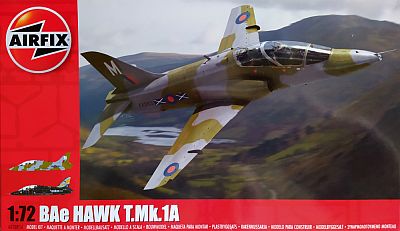
However, for this addition to my Hawk collection, I wanted to have a rather less “fancy” scheme, in other words, a Hawk in working clothes! As a Scotsman, the St Andrew’s Crosses may also have played their part!!!!!
Some weight is needed to stop the kit being a tail sitter. Guess what I forgot (aaaaaergh!)
-
In summary then, this is a good modern kit that is well recommended.
A few images of the real things. No Goshawks, unfortunately.
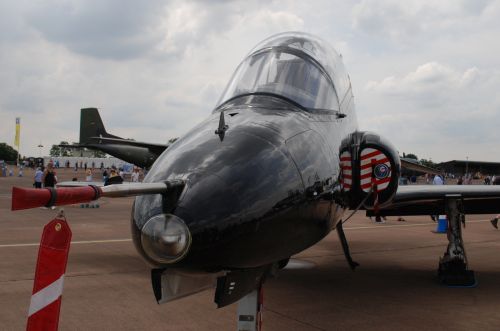
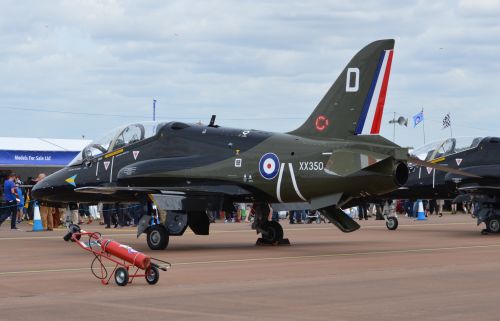
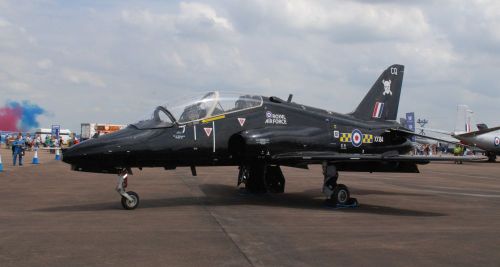
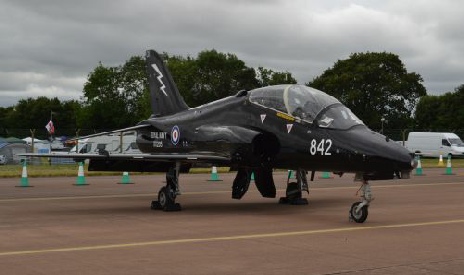
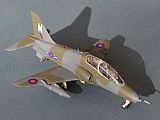
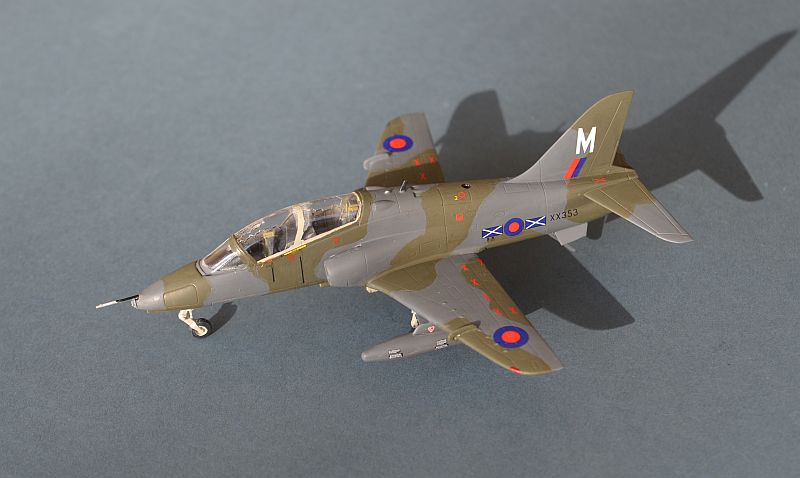
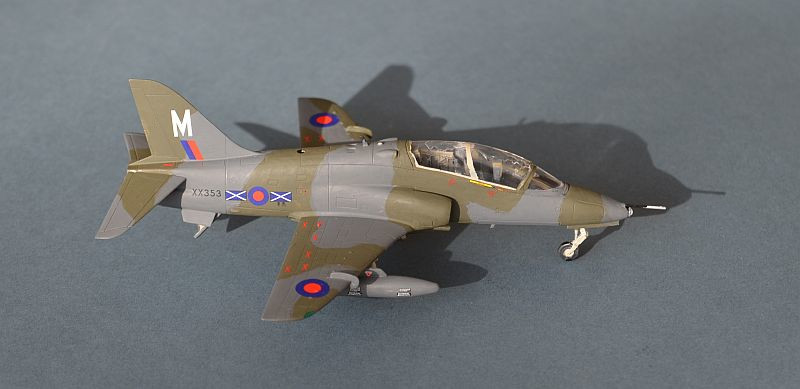
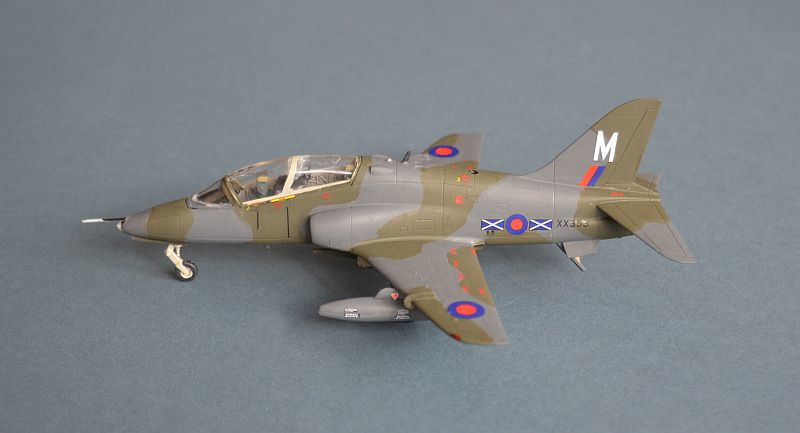
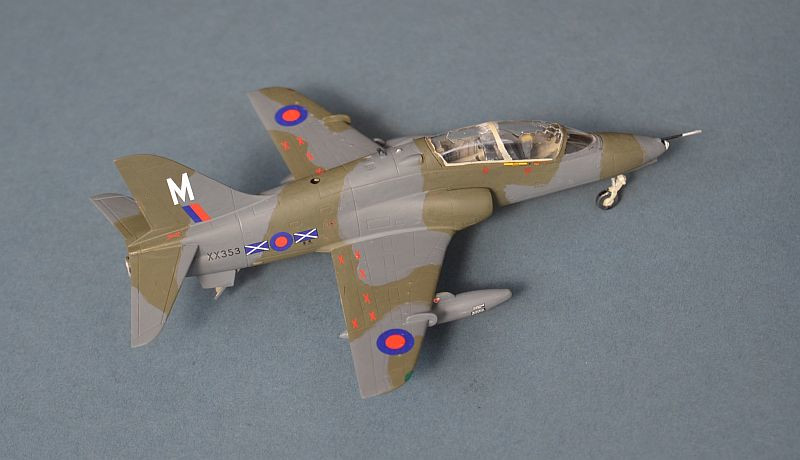
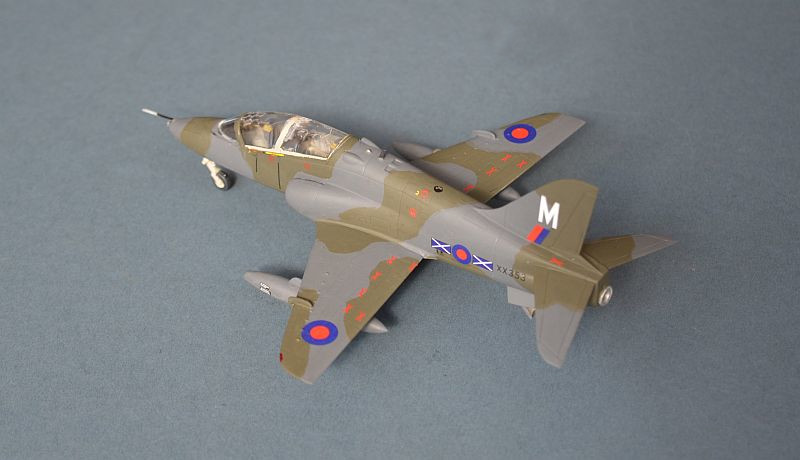
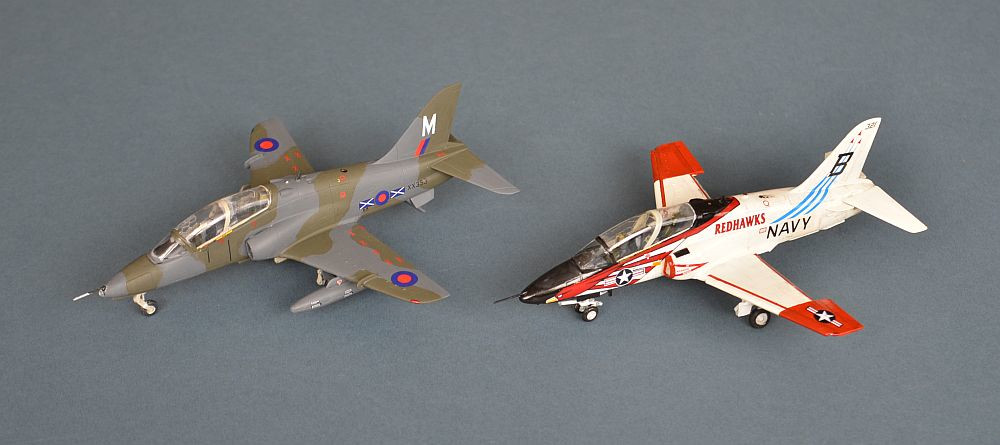
… And the rest of my Hawk fleet -
